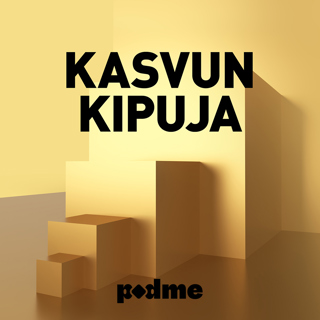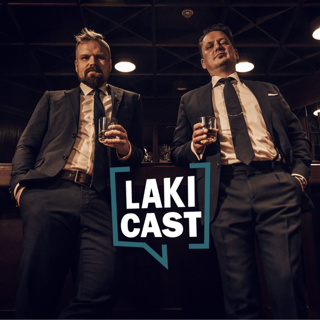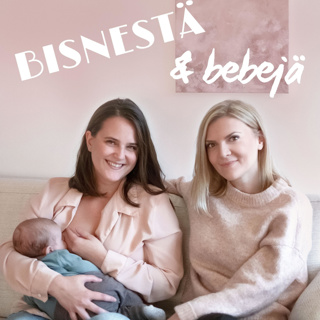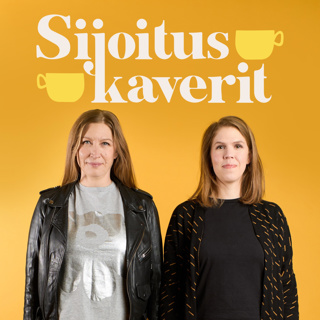
Blogcast #76: Why You SHOULD Give Salespeople Discount Authority
This is an Impact Pricing Blog published on September 7, 2022, turned into an audio podcast so you can listen on the go. Read Full Article Here: https://impactpricing.com/blog/why-you-should-give-salespeople-discount-authority/ If you have any feedback, definitely send it. You can reach us at mark@impactpricing.com. Now, go make an impact. Connect with Mark Stiving: Email: mark@impactpricing.com LinkedIn: https://www.linkedin.com/in/stiving/
14 Loka 20222min
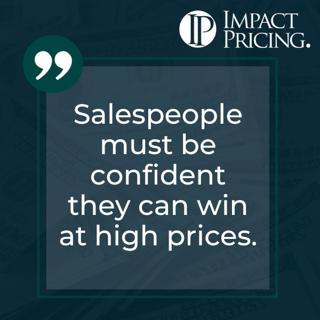
Memecast #79: King of Diamonds: Salespeople Must Be Confident They Can Win at High Prices
This one is the King of Diamonds from the Selling Value card deck. If a salesperson doesn't believe they're going to win selling your product, they're not going to try to sell your product. They don't want to bang their head against a wall. They're going to go sell whatever happens to be easiest. But the next step is, assuming they can sell our product, how do we get them to sell it and win at the higher prices to stop giving away deep discounts? Well, the question becomes, does a salesperson truly believe your product is worth the price? If a salesperson has confidence that their customer is going to get so much more value than whatever the price is that we're going to charge, then they're much more likely to win at higher prices. If a salesperson questions the amount of value customers might get, if a salesperson doesn't believe deep down in their soul that this product is a great product for their customer, then they're going to tend to discount. They're going to offer discounts and hope that the buyer says, "Yes, finally, the value that I receive is worth the price that you're asking." What we want is for our salespeople to go in confidently. What we really want is for our salespeople to understand the value that we deliver, truly believe the value we deliver, and be able to communicate that value to the buyer. We hope you enjoyed this memecast. This is also an example of how Pricing Table Topics works. Grab a deck of our cards, pull a random card, read the saying, and then talk for one to two minutes about what that card says. This will improve your understanding and more importantly, your ability to communicate important concepts about value. If you have any questions or feedback, please email me mark@impactpricing.com. Now, go make an impact. Connect with Mark Stiving: Email: mark@impactpricing.com LinkedIn: https://www.linkedin.com/in/stiving/
12 Loka 20222min
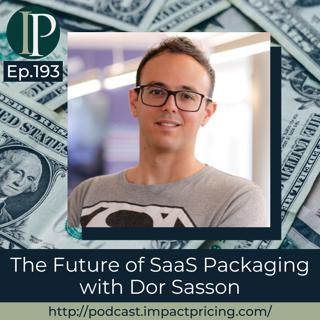
The Future of SaaS Packaging with Dor Sasson
Dor Sasson is the co-founder and CEO of Stigg, a company that helps clients grow with pricing through a software that enables them to control what can be priced and packaged separately, and make adjustments without having to do coding. He has also been a Senior Product Manager at New Relic, a technology company which develops cloud-based software to help website and application owners track the performance of their services. In this episode, Dor shares how his experience in New Relic led him to explore the field of SaaS packaging and how his company, Stigg, aims to provide solutions to packaging problems from the developers' end. Why you have to check out today's podcast: Pickup ideas about the adjustments to be done when switching to usage-based pricing Discover how Stigg could help you on your packaging and pricing problems Learn the importance of asking the right questions in the success of businesses "Talk to your customers, ask them about their willingness to pay. There are amazing frameworks out there for how to ask the right questions. It will unlock immense, deep understanding of how your customers think about your pricing and will really help you to nail down your own pricing strategy. – Dor Sasson Topics Covered: 01:11 – How Dor got into pricing 03:59 – What is "entitlements"? 04:52 – Adjustments made by New Relic upon switching to usage-based pricing 08:09 – The work that Stigg actually does 15:48 – The difference between buyers and users 16:35 – Situations in the past where Stigg would've been a big help 20:51 – Dor's vision and mission for his company, Stigg 23:49 – Pricing table topics: "Good, better, best" pricing is significantly more effective within a market segment 26:38 – Dor's pricing advice Key Takeaways: "The way we like to think about Stigg is, we want to build out an infrastructure that is so easy to implement and so easy to adopt from the application side that it makes it really fast and easy for product and growth teams to introduce new pricing plans, changes in existing pricing plans." – Dor Sasson "The value that we unlock is for builders and growth leaders out there that are looking to use pricing as a vehicle for growth and help their companies continue to adapt to changing markets, continue to adapt to how they scale into new customer segments, and basically make sure that they give their buyers more options to use their software." – Dor Sasson "Our North star by the end of the day is not only helping our customers be faster in the way they introduce changes and launch new pricing but also ultimately unlock growth by allowing more flexibility for their buyers to use and consume their products." – Dor Sasson "There is no "one size fits all" in pricing. The first thing you got to do is understand in a very deep and thoughtful way, who are your customer segments, and good, better, best is actually a really good strategy to approach different customer segments and make sure that you build your pricing in a way that fits or is more aligned to the way each segment perceive value." – Dor Sasson People / Resources Mentioned: Stigg: https://www.stigg.io/ New Relic: https://newrelic.com/ Connect with Dor Sasson: LinkedIn: https://www.linkedin.com/in/datapm/ Twitter: https://twitter.com/DorSasson Website: https://www.stigg.io/ Connect with Mark Stiving: LinkedIn: https://www.linkedin.com/in/stiving/ Email: mark@impactpricing.com
10 Loka 202229min

Blogcast #75: Why You Should NOT Give Salespeople Discount Authority
This is an Impact Pricing Blog published on August 31, 2022, turned into an audio podcast so you can listen on the go. Read Full Article Here: https://impactpricing.com/blog/why-you-should-not-give-salespeople-discount-authority/ If you have any feedback, definitely send it. You can reach us at mark@impactpricing.com. Now, go make an impact. Connect with Mark Stiving: Email: mark@impactpricing.com LinkedIn: https://www.linkedin.com/in/stiving/
7 Loka 20223min
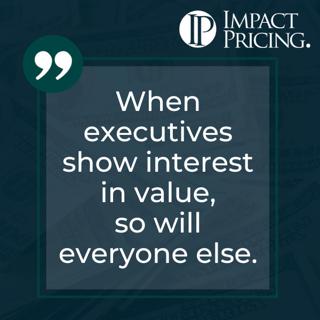
Memecast #78: King of Clubs: Executives Show Interest in Value
This one is the King of Clubs from the Selling Value card deck. What we really want is for our salespeople to be able to communicate the value of our products to our customers. It turns out that's so much easier to do when our marketing department has figured out and created the materials and the support to help salespeople go do that. But then marketing has to understand how is it that our customers value our products. And this is so much easier to do, if our product people create products that truly have value to our customers so they understand the value that our customers get from our products. It turns out very few people truly understand how much value we get, and if we want our entire company to truly think about value, to be able to communicate value, create value, capture value, the best and easiest way to do that is for the executive team to show interest about value. And what that truly means is that executives should be asking questions, how is it that customers are going to value this new feature, this new product? How much will they value it? How is it different from our competitors and how much do they value that differentiation? What problems are we solving? What problems are we solving our competitors aren't solving? Executives showing interest in value can help drive value to be a mindset inside the entire company. We hope you enjoyed this memecast. This is also an example of how Pricing Table Topics works. Grab a deck of our cards, pull out a random card, read the saying, and then talk for one to two minutes about what that card says. This will improve your understanding and more importantly, your ability to communicate important concepts about value. If you have any questions or feedback, please email me mark@impactpricing.com. Now, go make an impact. Connect with Mark Stiving: Email: mark@impactpricing.com LinkedIn: https://www.linkedin.com/in/stiving/
5 Loka 20222min

The Structure of SaaS Pricing and Designing SaaS Pricing Models with Ulrik Lehrskov-Schmidt
Ulrik Lehrskov-Schmidt is the partner of willingnesstopay.com where they help companies create pricing models that radically accelerates growth and unlocks the value of their underlying technology. He has founded and sold two different companies, and he has a master's degree from Harvard. He also has an upcoming book called "The Pricing Roadmap" which will be published this December. In this episode, Ulrik enumerates four (4) things that he thinks are the most important in SaaS pricing. He also shares his methods on product segmentation and explains why the traditional "good, better, and best" product tier is lacking some important details. Why you have to check out today's podcast: Learn about designing your models as well as the structure of SaaS pricing Find out how different 'tiered packaging' is to Mark's idea of good, better, best Understand what prescriptive solution is and why you should not do it "Usually, people underestimate the pricing power they have in the market. So, I see, even if you had to do it blind, the chances that you could make more money by raising prices, even poorly, is better than what you're doing." – Ulrik Lehrskov-Schmidt Topics Covered: 01:47 – How Ulrik got into pricing 05:43 – The top four things that really matter in SaaS pricing 08:22 – There are no perfect outcomes; only workable and functional outcomes 09:27 – How Ulrik does product segmentation 12:09 – What is prescriptive solution and why you should avoid it 15:19 – Ulrik's attempt on product packaging with conjoint analysis 18:04 – What Ulrik likes about being a pricing consultant 19:45 – Ulrik's thoughts on the three tiers of products (Good, Better, Best) 21:24 – How Ulrik actually defines the tiered packaging model 22:08 – The specifics of "Tiered Packaging"; how it's different from good, better, best 28:30 – Ulrik's pricing advice 29:59 – Connect with Ulrik Key Takeaways: "If you have segments that are so different that they need different pricing models and product models, that's the first thing you need to figure out." – Ulrik Lehrskov-Schmidt "There are two different high level tool boxes to do price discrimination; pricing matrix and packaging. Packaging runs on functionality, and pricing metrics on some volume or usage." – Ulrik Lehrskov-Schmidt "There's not a perfect outcome. There is a workable outcome, functional outcome to run through. And then you might want to go back and change something if there is a better outcome to be had." – Ulrik Lehrskov-Schmidt People / Resources Mentioned: The Pricing Roadmap: https://www.willingnesstopay.com/saas-pricing-book Connect with Ulrik Lehrskov-Schmidt: LinkedIn: https://www.linkedin.com/in/ulriklehrskovschmidt/ Website: https://www.willingnesstopay.com/ Email: ulrik@behaviouralstrategy.com Connect with Mark Stiving: LinkedIn: https://www.linkedin.com/in/stiving/ Email: mailto:mark@impactpricing.com
3 Loka 202231min

Blogcast #74: Qdoba Knows their Buyer's Decision Journey
This is an Impact Pricing Blog published on August 24, 2022, turned into an audio podcast so you can listen on the go. Read Full Article Here: https://impactpricing.com/blog/qdoba-knows-their-buyers-decision-journey/ If you have any feedback, definitely send it. You can reach us at mark@impactpricing.com. Now, go make an impact. Connect with Mark Stiving: Email: mark@impactpricing.com LinkedIn: https://www.linkedin.com/in/stiving/
30 Syys 20223min
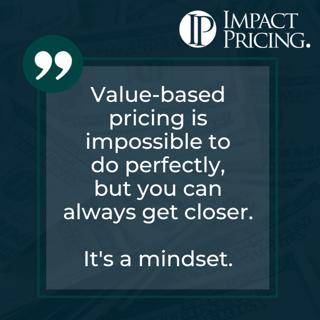
Memecast #77: King of Hearts: Value-based Pricing is Impossible
This one is the King of Hearts from the Selling Value card deck. It's true, value-based pricing is impossible because value-based pricing simply means charge what your customers are willing to pay. And yet you don't know how much your customers are willing to pay. You can't read their mind. You don't know the answer and you never will know the answer. But instead of assuming we're ever going to get perfect, let's assume we can get better. We can adopt this as a mindset. If we're thinking always about how much is our market, our customer, willing to pay. All of a sudden, we change our thinking from cost-plus, we have to cover our cost type thinking, to, could I get more from this customer? Could I get more from this marketplace? And as we start thinking that way, we also start thinking, can I create products that deliver a little bit more value? Can I communicate my value better to my customers? Can I help my customers, or my buyers, understand that there's way more value there than they originally thought, and therefore they would be willing to pay us more money? Once we start to understand and think about how is it that our customers value our products, then we have the ability to price and capture more of that value, meaning more profit to us. We hope you enjoyed this memecast. This is also an example of how Pricing Table Topics works. Grab a deck of our cards, pull out a random card, read the saying, and then talk for one to two minutes about what that card says. This will improve your understanding and more importantly, your ability to communicate important concepts about value. If you have any questions or feedback, please email me mark@impactpricing.com. Now, go make an impact. Connect with Mark Stiving: Email: mark@impactpricing.com LinkedIn: https://www.linkedin.com/in/stiving/
28 Syys 20222min







